Share
Working at ESO
Are you interested in working in areas of frontline technology and in a stimulating international environment? Do you feel your profile matches our requirements? Learn more about our current vacancies and apply online. Read more..
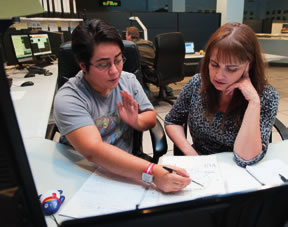
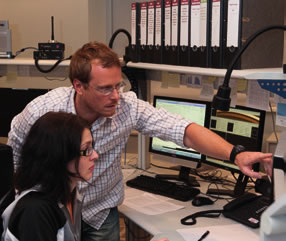

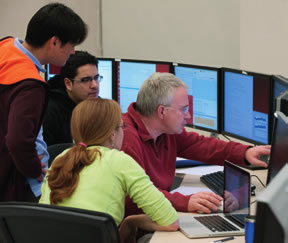
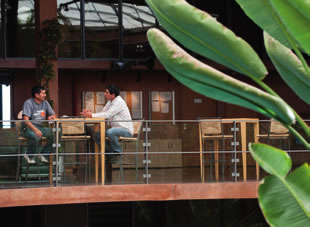
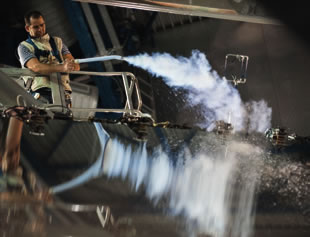
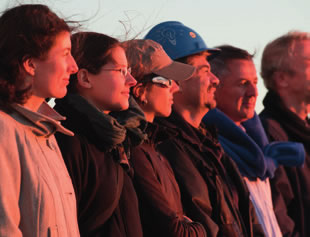
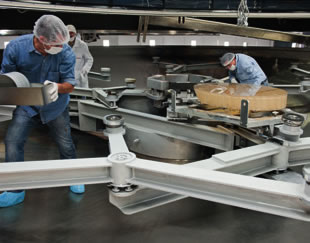
The European Organisation for Astronomical Research in the Southern Hemisphere (ESO) is the foremost intergovernmental astronomy organisation in Europe and the world's most productive ground-based astronomical observatory. ESO carries out an ambitious programme focused on the design, construction and operation of powerful ground-based observing facilities enabling astronomers to make important scientific discoveries.
ESO operates three unique world-class observing sites in northern Chile: La Silla, Paranal and Chajnantor (home to ALMA and APEX), and the ESO Headquarters are located in Garching, near Munich, Germany.
At Paranal, ESO operates the Very Large Telescope, the world's most advanced visible-light astronomical observatory, and will host and operate the southern array of the Cherenkov Telescope Array, the world's largest and most sensitive high energy gamma-ray observatory. ESO is a major partner in ALMA, the largest astronomical project in existence. And on Cerro Armazones, ESO is building the 39-metre Extremely Large Telescope (ELT), which will become "the world's biggest eye on the sky" and whose operations will be fully integrated into the Paranal Observatory.
Due to the need for additional resources associated with its programmes, the Optical Engineering Department within the Directorate of Engineering at ESO Headquarters in Garching, near Munich, Germany is advertising the position of
Photonics Engineer/Physicist
Garching
Deadline 06/03/2022
We are looking for a photonics engineer/physicist to support ESO's laser guide star (LGS) activities, with a focus on: system testing, installation, and commissioning of the six laser guide star units for the ELT; supporting the ongoing operation of the laser guide stars at the VLT and upgrades for new instruments; participating in the development and on-sky testing of test benches for new laser guide star applications. Experience with laser optical systems (for example in the fields of remote sensing, laser communication, lithography, or astronomy) would be an advantage for this position. Applicants should have a good understanding of laser physics and be able to follow the latest developments in the field, applying them to LGS systems. This position provides the opportunity to work in a collaborative international environment and hands-on participation to large scale optical and photonic systems for astronomy.
The Optical Engineering Department comprises a team of 20 engineers. The department provides engineering expertise to ESO's projects within the ESO matrix organisation, in the areas of optical design for telescopes and instruments, active optics and wave front control, metrology for telescope alignment, laser guide stars, optical fibre technology and Assembly Integration and Testing of optical systems and instruments. In addition, the department manages 900m2 of optical and opto-mechanical integration laboratories at ESO headquarters and supports the observatory in solving optical problems arising in systems in operation. The laser and photonics group within the optics department has its roots in the development and deployment laser guide stars for ESO observatories. It also has capabilities in optical fibres and other laser applications for astronomical instrumentation.
Main Duties and Responsibilities
Participate in the assembly and system test of laser guide stars for ESO projects such as the ELT. Perform system and sub-system (laser source, projector, laser pointing camera, etc) tests, prepare test reports, and provide inputs to the compliance matrix.
Support the installation of the LGS on ESO telescopes in Chile. Participate in the commissioning and provide inputs to commissioning reports.
Support the ongoing operation of the LGS at the VLT and contribute to the design and specification of upgrades for new instruments. Examples of upgrades could include incremental performance improvements, complete additional LGS units, or overhauls.
Monitor new developments in lasers and optics relevant to laser guide stars; identify where they could be applied to ESO's LGS systems. Contribute to ESO's Technology Development programme and participate in R&D activities where new developments can be tested in the lab and on sky. Currently, the main experimental activity is a development called "CaNaPy".
You may be involved in scientific collaborations with European and non-European institutes. Extended missions to ESO's observatories in Chile may be required for the installation and commissioning of laser systems on ESO telescopes.
Reports to
Head of the "Lasers and Photonics" group in the Optical Engineering Department as functional manager within ESO's matrix structure.
Key Competences
Essential Competences
- Ability to plan and perform LGS system tests in a thorough and systematic manner. Verify performance in the lab, troubleshoot, and find solutions to technical issues;
- Good understanding of laser physics and free-space laser propagation; the ability to follow and apply new developments in the field;
- Contribute to the design and development of laser systems and components with innovative solutions;
- Capacity and motivation to work in a team. Building strong collaborative working relationships with people from different cultural backgrounds and engineering disciplines;
- Strong analytical skills. Ability to identify key issues, assess options, and propose a way forward to manage risk and resolve problems;
- Be proactive in acquiring new skills and quickly develop expertise;
- Provide clear, concise and timely verbal and written communication. Escalate priority issues appropriately;
- Plan activities, monitor progress of your own work, deliver to agreed deadlines and standards;
Desirable Competences
- Knowledge of opto-mechanical design and manufacturing principles;
- Knowledge of the general principles of adaptive optics;
- Familiarity with optical design software applied to laser systems (preferably OpticStudio);
- Use of simulation/data analysis software (e.g. Python or Matlab);
- Familiarity with systems engineering methodology.
Experience
Candidates should have at least 3 years' experience designing, assembling, and testing laser optical systems (e.g. laser guide star, remote sensing/LIDAR, lithography, free-space communications).
Laboratory experience with high-power lasers and nonlinear frequency doubling would be an advantage.
Qualifications
Essential educational level: A university degree (master) in photonics engineering, physics, or a related technical field. A PhD degree or postgraduate experience in a relevant field would be an advantage.
Language skills
The position requires a good working knowledge of English.
Remuneration and Contract
We offer an attractive remuneration package including a competitive salary (tax free), comprehensive pension scheme and medical, educational and other social benefits, as well as financial help in relocating your family and the possibility to place your child/children in daycare.
ESO aims to support members of personnel in maintaining a good work-life balance (https://www.eso.org/public/jobs/conditions/intstaff/#work-life-balance) between their professional and private life. ESO is also committed to offering family-friendly support (https://www.eso.org/public/jobs/conditions/intstaff/#family-friendly-support), creating a work environment and policies which allow staff to balance their professional and private responsibilities through flexible working arrangements and financial support for families.
The contract is for a fixed term duration of three years and is subject to successful completion of the probation period. There may be a possibility of extension(s) subject to individual performance and organisational requirements, and as defined in the applicable policies and staff rules and regulations. For any further information, please visit ESO's conditions of employment (https://www.eso.org/public/jobs/conditions/intstaff/). Please note that the contract policy and in particular the regulations concerning fixed-term and indefinite contracts are currently under review which may lead to changes in the contractual conditions applicable to this position.
Duty Station
Garching near Munich, Germany with regular duty trips to all ESO sites in Chile.
Career Path: V
Application
If you are interested in working in areas of frontline science and technology and in a stimulating international environment, please visit http://www.eso.org for further details.
Applicants are invited to apply online at http://jobs.eso.org/. Applications must be completed in English and should include a motivation letter and CV. Within your CV, please provide the names and contact details of three persons familiar with your work and willing to provide a recommendation letter upon request. Referees will not be contacted without your prior consent.
Deadline for applications is 06.03.2022.
Interviews are expected to start soon after this date.
ESO has established diversity as an important value of the Organisation, is committed to providing an equal opportunities environment and is actively seeking to promote a diverse and inclusive workforce.
No nationality is in principle excluded, however, recruitment preference will be given to nationals of Australia, Austria, Belgium, the Czech Republic, Denmark, Finland, France, Germany, Ireland, Italy, the Netherlands, Poland, Portugal, Spain, Sweden, Switzerland, the United Kingdom and Chile irrespective of gender, age, disability, sexual orientation, ethnicity or religion.
